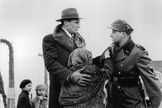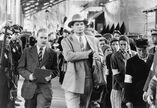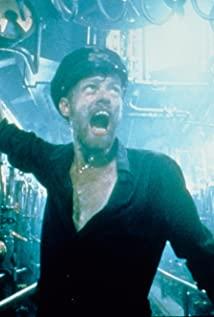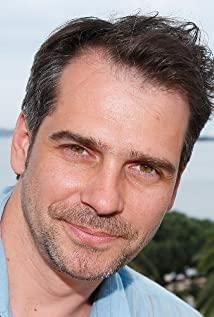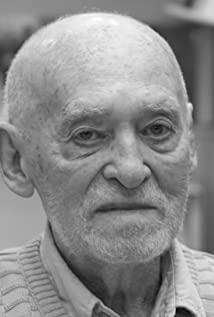"Schindler's List" - color shows the theme of the film
"Schindler's List" is a true representation of the German entrepreneur Oscar Schindler who protected 1,200 Jews from fascists during World War II. historical events.
German speculator Schindler was born in Moravia, in what is now the Czech Republic, in 1908. He was a member of the Congress Party at the beginning of World War II. He was a womanizer, a man who enjoyed himself, and was a staunch member of the well-known local Nazis. He is very good at using the relationship with the stormtrooper leader to grab the most capital. Jews were the cheapest labor in occupied Poland, so Schindler, the shrewd war-rich Schindler, employed only the victims of the Nuremberg race laws in his new enamel factory. These people were given a job in an enamel factory, and thus gained temporary safety from the ravages of the killing machine, and Schindler's factory became a refuge for the Jews. Those who work there are protected by work on important war products: the enamel factory supplies cutlery and bullets to the front-line troops.
By 1943, the brutal bloodbath of the Krakow ghetto disillusioned Schindler's last bit of Nazi disillusionment. He had known for a long time about the crematoriums and gas chambers built by the Germans, and had long heard that it was not water but poisonous gas that came out of the nozzles of the bathrooms and steam rooms. From then on, Schindler had only one idea: to protect as many Jews as possible from death at Auschwitz. He drew up a list of workers he claimed was "necessary" for his factory to function properly, bribing Nazi officials to keep the Jewish population alive. He was increasingly suspected of violating racial laws, but he tactfully escaped Nazi persecution each time. As always, he risked his life to rescue the Jews. When a train carrying his women workers staggered to Auschwitz-Bill Kenley, he spent a fortune to get them back to his factory.
Soon, the Soviet Red Army came to the city of Krakow and announced to the Jews who survived working in Schindler's factory: the war is over. One night when it snowed heavily, Schindler bid farewell to the workers, and the more than 1,000 rescued Jews saw him off, and they handed him a self-signed testimony to prove that he was not a war criminal. At the same time, they knocked out their gold teeth and stashed gold jewelry, made it into a gold ring, and presented it to Schindler. The ring is engraved with a famous Jewish saying: "Saving one life equals saving all mankind".
Schindler couldn't hold back his tears. He regretted that he still had a golden tooth, because if he sold it, he would have saved at least one more person. Schindler did everything he could for his redemption. All the money he accumulated during the war was used to save the lives of Jews... After the
war, Schindler lived in seclusion in a small town in Switzerland, penniless, relying on the help of the Jews he had rescued. Rescue life. A few years later, Schindler died in poverty. According to Jewish tradition, Schindler was buried in Jerusalem as one of the "36 Righteous".
At the end of the film, it is Schindler's tomb. Those Jews who had been rescued by Schindler before the war and who have entered their twilight decades later, as well as their descendants who have walked through the grave on behalf of their ancestors, are placed on the tombstone. A stone representing "Thanksgiving never changes" as a salute...
Color montage is one of the important means of film artistic expression. Using the cross configuration of color and black and white, the concept of time and space is broken through the strong contrast and rapid change of color, and the past, the present, the future, and the illusion are intertwined, which can produce a distinct emotional contrast and the ups and downs of the plot. The film "Schindler's List" is the best in the use of this technique. The color configuration in "Schindler's List" includes color and black and white, and the keynote is black and white, which is to express the authenticity of the unbearable catastrophe of the Jewish nation. Because black and white has a sense of depression, deepness and solemnity, using it to reflect that horrific history can play a role of crying and grief. It is not simply used to break time and space and form contrasts. Instead, color is configured in the black and white tone of the brutal war years, so that color appears as a dramatic motive, subtly playing the role of portraying characters and promoting the development of the plot. For example, in the scene of "Climbing to the View" in the film, Schindler and his wife were riding horses on a high ground to look at the massacre in Krashof, and they saw a small boy in a red sweater walking out of the Jewish house. Girl, walking through the cluttered crowd, as the camera panned, the little girl turned her back to the camera again. Schindler was very concerned about the little girl's fate, and looked down carefully with the probe. He thought the little girl could walk over, but she Immediately turned back. Then when the little girl walked through the Nazi killing area, the Nazis picked up the gun and shot five Jews to death, which caused Schindler to worry even more, what would happen to such a simple and lovely little girl? At this time, the little girl's red is not only the red in the sense of color, but more importantly, the red in the meaning. Schindler's humanity has been illuminated by this little fire, and Schindler's emotions are in change. In this film, the color sets the theme and is also the turning point of the plot. Although there is no rich use of color, it subtly creates the atmosphere of the film and draws our emotions.
View more about Schindler's List reviews



